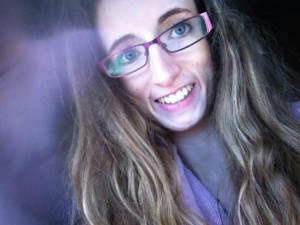 A 21-year-old woman has spoken about her experience of growing up with dyspraxia as she calls for greater awareness of the little known and often misunderstood condition.
A 21-year-old woman has spoken about her experience of growing up with dyspraxia as she calls for greater awareness of the little known and often misunderstood condition.
Dyspraxia is a form of developmental co-ordination disorder (DCD) and affects movement, coordination and speech in children and adults. Although little known, it is a relatively common condition with high-profile sufferers including Harry Potter star Daniel Radcliffe and supermodel/actress Cara Delevigne.
Emily Woollard (PICTURED), 21, from Solihull, was diagnosed with the condition in primary school and from 2005 was treated by paediatric occupational therapist Sally Payne, who heads up the team at Solihull Community Services, part of Heart of England NHS Foundation Trust.
Here Emily talks about her story as she aims to spread awareness about the condition during Dyspraxia Awareness Week 2015 (October 11-17), the theme of which this year is the under-recognition of girls/women with dyspraxia, and how working with Sally has helped her deal with the condition.
“From a young age my parents knew there was something not quite right,” Emily explained. “When I started primary school I was struggling and falling behind my peers in learning and development. I would lose concentration easily in class and forget what I was doing so I had to keep being reminded what I had to do.
“Sometimes I had to stay in at breaks because I was behind the others in work. When writing my hands would get tired easily and it would make me slower. I had pencils with grips on so I wouldn’t lose grip when writing and I had a special board so I could write in a straight line. I was always in the bottom classes at secondary school. It was also difficult for me socialising at that age as I was a quiet child and some children didn’t want to be my friend because I was different so I got left out a lot.
“Still now dyspraxia affects my movement in day-to-day tasks. I have to do things slower than most people. I have weak wrists so my hands are floppy and I can’t lift heavy objects. I can also be quite clumsy and I don’t have much spatial awareness as I find it hard to judge distance. I still struggle with my memory and get things crossed in my head.
“At the beginning it did take a while for dyspraxia to be diagnosed. The teachers started to notice when I was in six-years-old but didn’t know what was wrong and in all it took three years to diagnose. Then in 2005 the pediatrician introduced me to Sally Payne who gave me and the people around me pointers on how to help and improve things in my day-to-day life.
“Seeing Sally really helped me a lot. She advised my school and my parents about dyspraxia and how to help me in the right way. She showed my parents how to help me with basic tasks for me to do like setting a table and making a drink and gave me and people around me tips on how to improve things in daily life like household skills. What has also been really beneficial has been the workshops Sally set up with other dyspraxics my age so I could meet them and do fun activities together.”
Sally, who is also a trustee of the Dyspraxia Foundation, said that although dyspraxia is a relatively common condition, awareness of it is still sadly lacking.
She said: “Dyspraxia is one of the most common developmental disorders of childhood, affecting around five to 10% of the school-aged population, 2% to a severe degree. However, poor awareness of the condition means that children’s difficulties are often dismissed as developmental immaturity, leading to delays in accessing the early intervention and support that a child needs.
“Emily’s experience in her formative years is unfortunately not unusual and that is why it is vital that children with dyspraxia are diagnosed early and everyone involved works together to ensure that they develop the fundamental movement and organisational skills that they need to carry out daily activities, including those necessary for school performance.”
Emily said she hopes dyspraxia becomes a more understood condition in years to come. She added: “When I tell people I have dyspraxia they either say ‘what’s that?’ or ‘do you mean dyslexia?’ I constantly have to explain to people what it is and how it affects people. I hope one day people understand it better and can spot the signs more quickly in children so they can get that intervention as soon as possible.”
To find out more about dyspraxia visit www.dyspraxiafoundation.org.uk
Published 12/10/15






